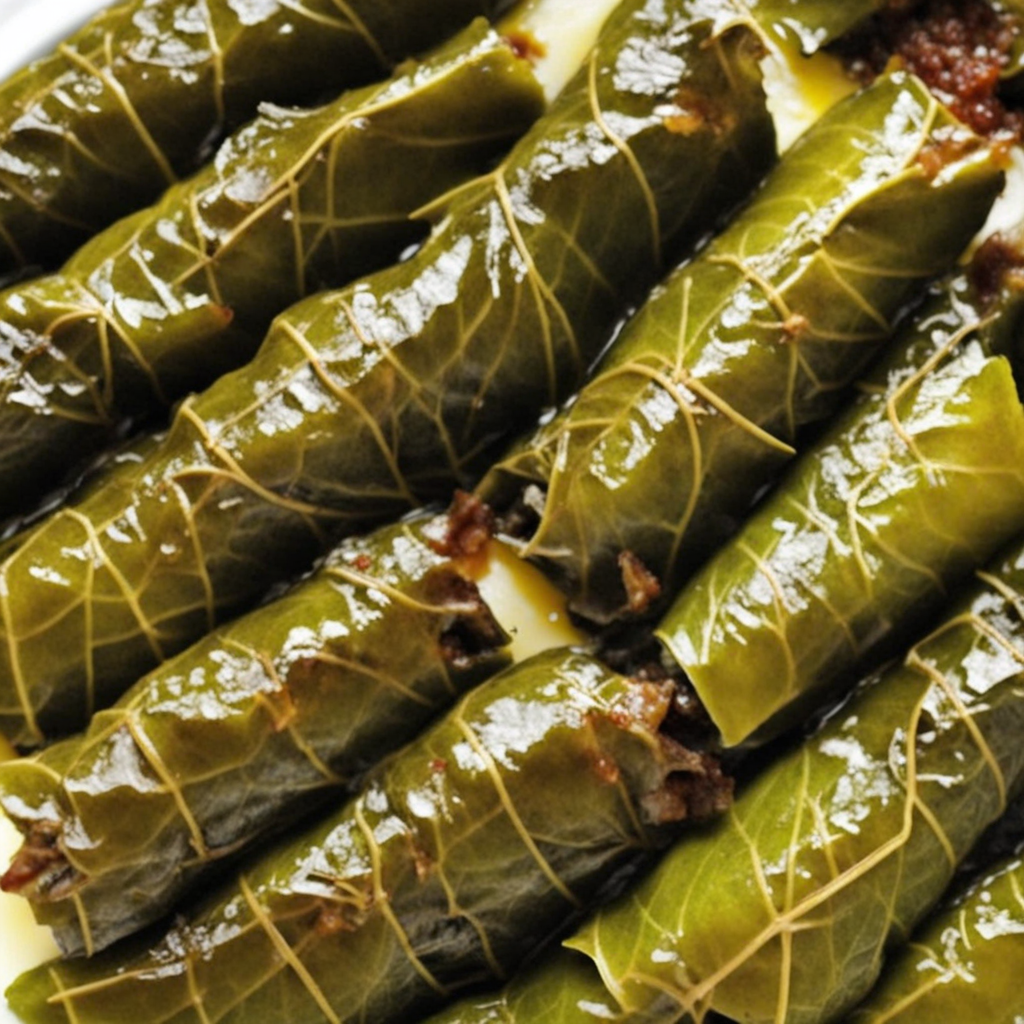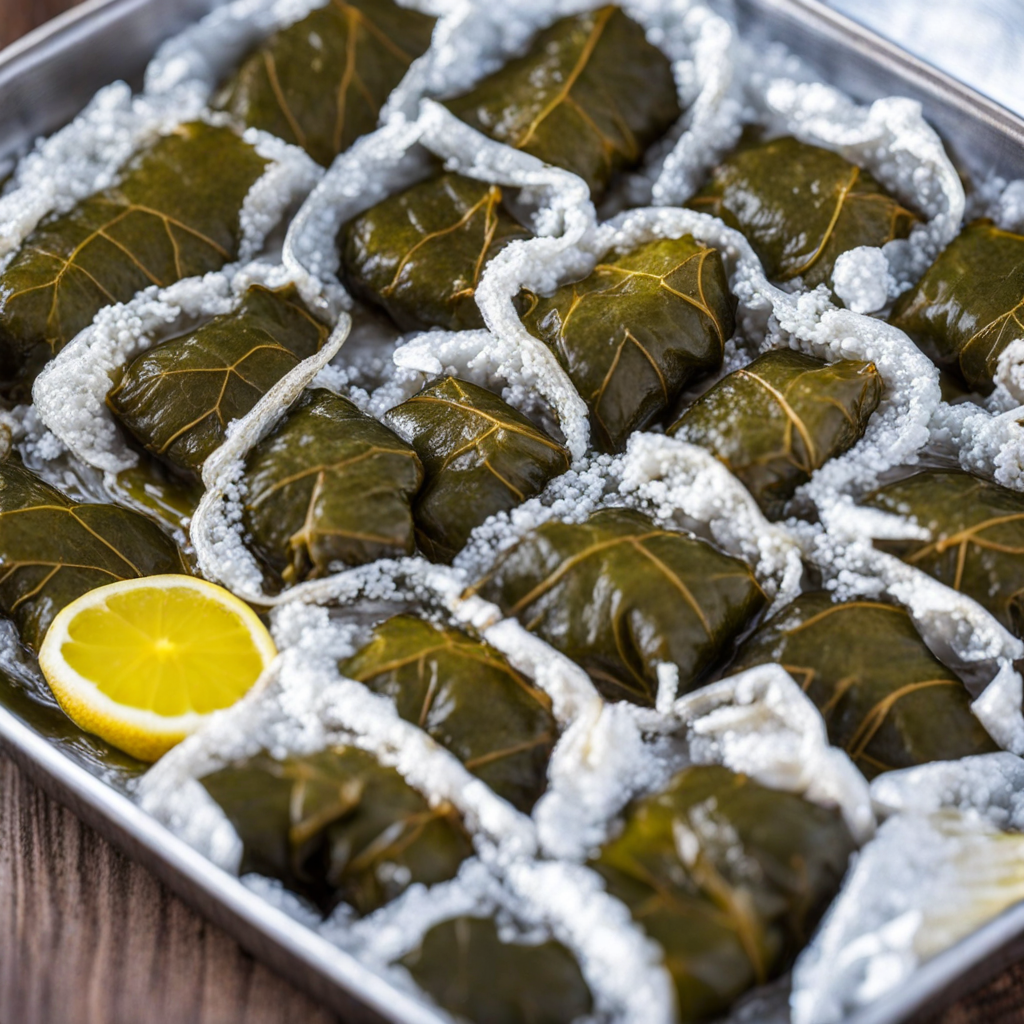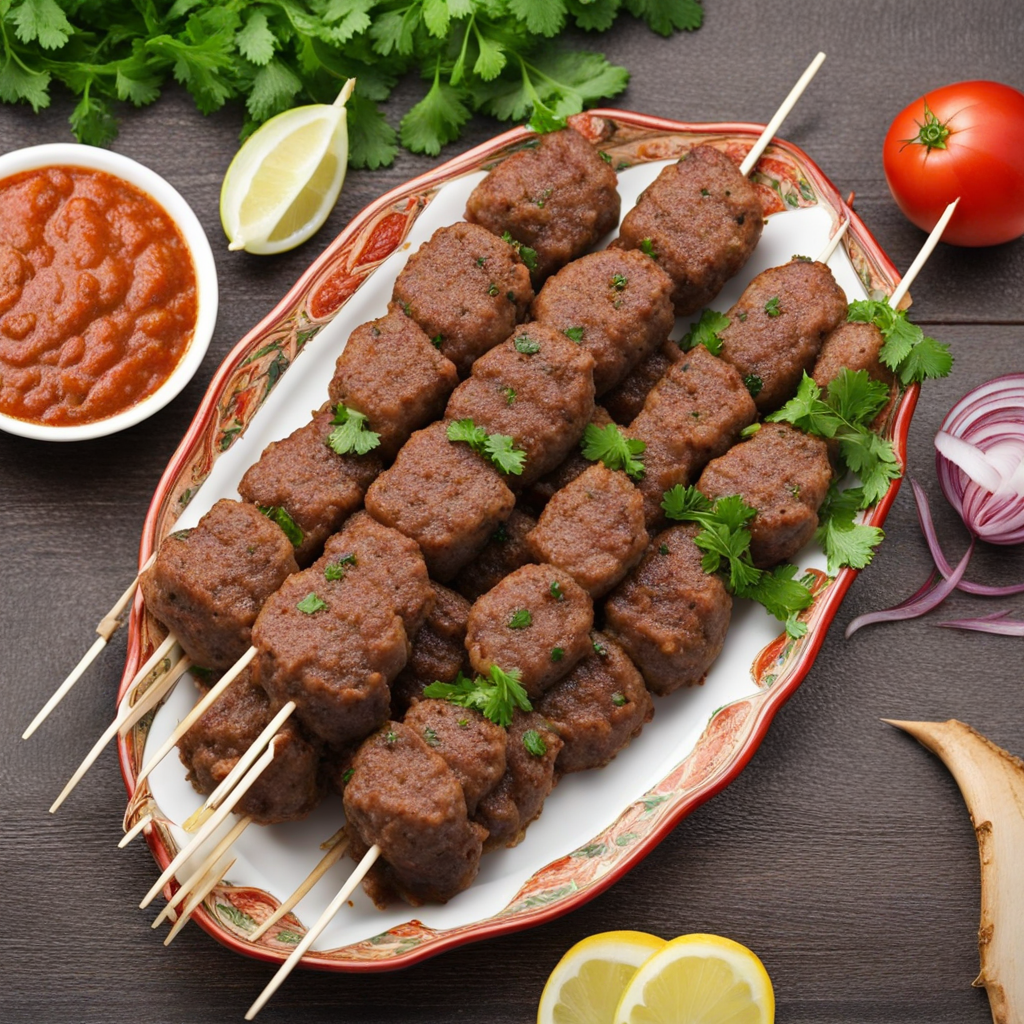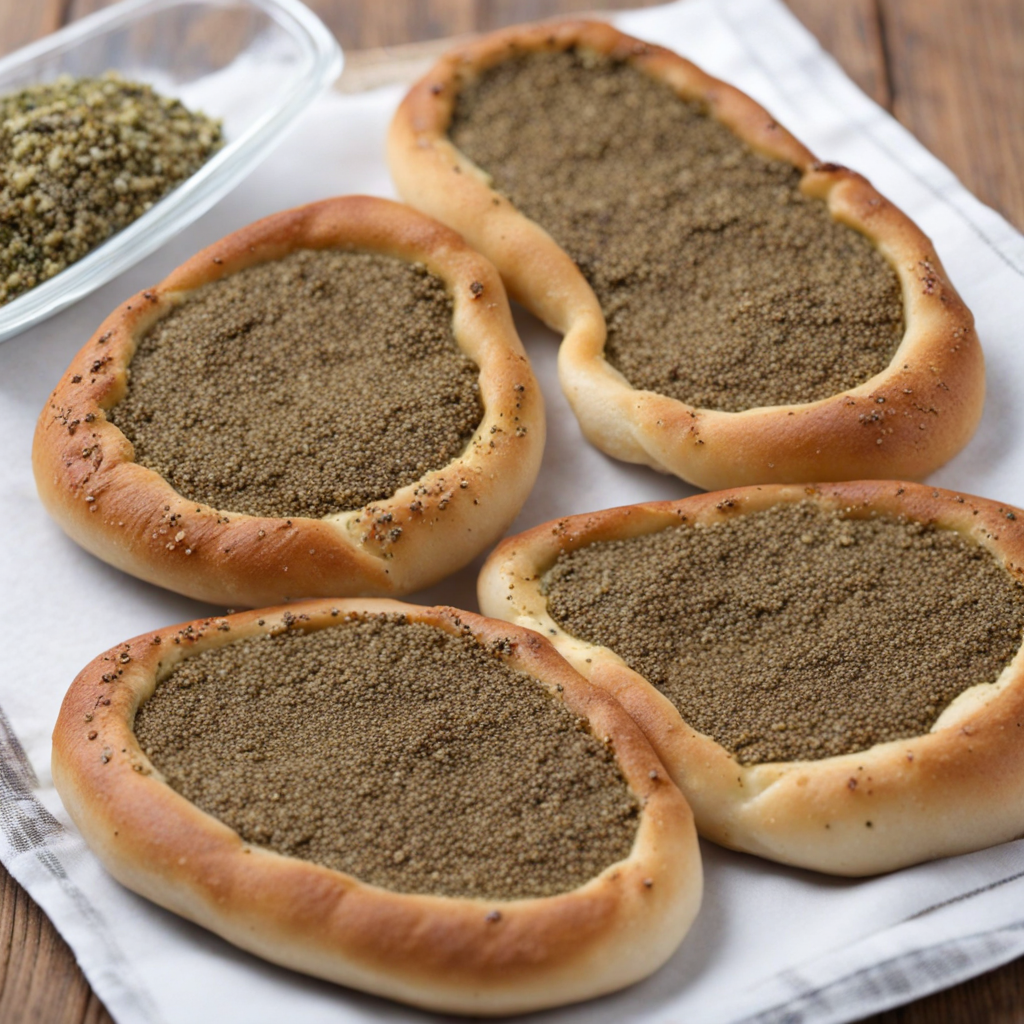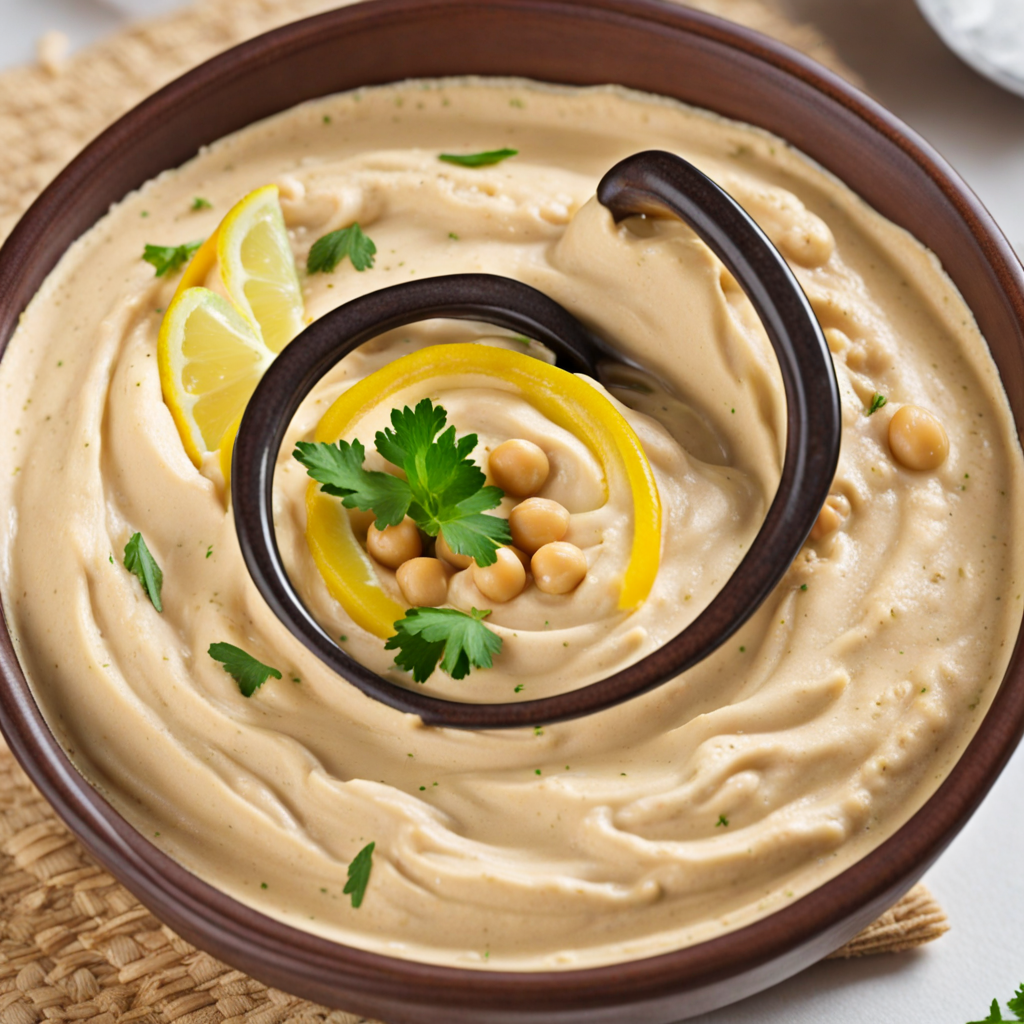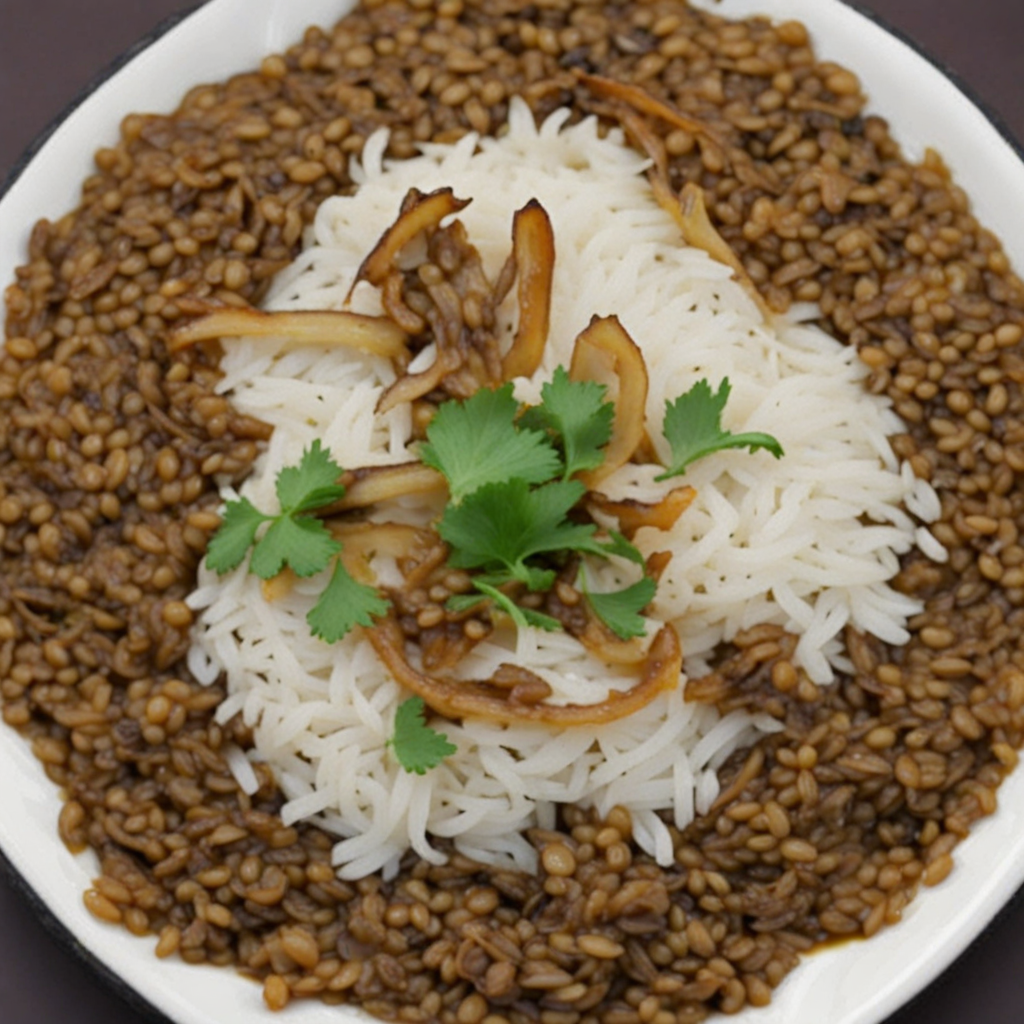Stuffed Grape Leaves
Stuffed Grape Leaves, known as "Warak Enab" in Lebanon, are a delightful culinary creation that showcases the rich flavors and traditions of Lebanese cuisine. These delectable rolls are made by wrapping tender grape leaves around a savory filling, usually composed of rice, finely chopped vegetables, and aromatic herbs such as parsley, mint, and dill. The mixture is often infused with warm spices like cinnamon and allspice, which lend an aromatic depth to each bite. The grape leaves themselves, with their slightly tangy taste, complement the filling beautifully, offering a balance of flavors that is both refreshing and satisfying. The process of preparing Stuffed Grape Leaves is an art in itself. The grape leaves are typically blanched to soften them, making them pliable for rolling. Once filled and rolled tightly, the grape leaves are nestled in a pot and gently simmered with a splash of lemon juice and olive oil, allowing them to absorb the flavors while cooking. This method infuses the dish with a vibrant citrus note, enhancing the overall taste and providing a delightful contrast to the rich filling. Served warm or at room temperature, Stuffed Grape Leaves are often accompanied by a side of tangy yogurt or a drizzle of olive oil, elevating the dish even further. They are a staple at family gatherings and celebrations, symbolizing hospitality and tradition in Lebanese culture. Each bite of these stuffed delights is a journey through the lush landscapes of Lebanon, filled with the warmth of its culinary heritage and a celebration of its vibrant flavors.
How It Became This Dish
Origins of ورق عنب ورق عنب, or grape leaves, have a rich history that traces back to the ancient civilizations of the Mediterranean. This dish, widely known as stuffed grape leaves, is believed to have originated in the region encompassing modern-day Lebanon, Syria, and Turkey. The preparation of grape leaves as a culinary delight dates back thousands of years, with references found in ancient texts from the Assyrians and Romans, who utilized the leaves for both culinary and medicinal purposes. The ancient Greeks also enjoyed this dish, calling it "dolma," which means "stuffed." Grape vines have been cultivated in the Mediterranean for millennia, making grape leaves a readily available and versatile ingredient. The practice of using grape leaves as a wrapping for various fillings, including rice, meat, and spices, became a way to preserve and enhance the flavors of the ingredients inside. The tradition of ورق عنب spread throughout the region, with each culture adding its own twist to the preparation. \n Cultural Significance in Lebanon In Lebanon, ورق عنب is more than just a dish; it is a symbol of hospitality and familial bonds. It is often served during gatherings, celebrations, and special occasions, such as weddings and religious holidays. The preparation of ورق عنب is a communal activity, often involving family members coming together to prepare and roll the grape leaves. This practice fosters a sense of unity and strengthens family ties, as recipes are passed down through generations. Moreover, ورق عنب holds a place of pride in Lebanese cuisine, representing the country's rich agricultural heritage. The dish reflects Lebanon's diverse culinary influences, including flavors from the Ottoman Empire and neighboring Arab nations. In Lebanon, it is common to find variations of ورق عنب that include different types of fillings, such as minced lamb, beef, or vegetarian options that might incorporate pine nuts, tomatoes, and spices like cinnamon and allspice. The dish's adaptability allows it to cater to various dietary preferences and cultural practices. \n Development Over Time As Lebanese cuisine evolved, so did the preparation of ورق عنب. Traditionally, grape leaves were hand-picked during the spring and early summer months when they were tender and young. The leaves would be blanched to soften them, making them easier to roll. However, with modern culinary practices and globalization, the availability of preserved or jarred grape leaves has made this beloved dish more accessible, allowing it to be enjoyed year-round. The traditional method of preparing ورق عنب involves a meticulous process of washing, blanching, and rolling the grape leaves around the filling. Each roll is packed tightly into a pot, often layered with slices of lemon or tomato to enhance the flavor during cooking. The dish is typically slow-cooked in a broth or olive oil, allowing the flavors to meld beautifully. In recent years, the dish has also seen contemporary interpretations, with chefs experimenting with fusion flavors and presentation styles. Modern Lebanese restaurants may serve ورق عنب with a twist, incorporating elements from international cuisines or playing with textures and plating techniques. Nevertheless, the foundational essence of the dish remains, showcasing the balance of flavors and the importance of fresh ingredients. \n Global Influence and Popularity The diaspora of Lebanese communities around the world has significantly contributed to the global popularity of ورق عنب. Lebanese immigrants took their culinary traditions with them, establishing restaurants and sharing their recipes in countries such as the United States, Canada, Australia, and various parts of Europe. As a result, ورق عنب has become a staple in Middle Eastern restaurants worldwide, enjoyed by both Lebanese expatriates and those looking to explore new flavors. In many Western countries, ورق عنب is often served as part of a mezze platter, alongside hummus, baba ghanoush, and tabbouleh, showcasing its role as an appetizer or side dish. This exposure has helped educate people about Lebanese cuisine, leading to a greater appreciation for its complexity and the cultural narratives that accompany each dish. The rise of food media and cooking shows has also played a role in popularizing ورق عنب. Chefs and home cooks alike are inspired to recreate this dish, sharing their own variations and stories behind it. Social media platforms allow for the sharing of recipes, tips, and presentation ideas, further entrenching ورق عنب in contemporary culinary culture. \n Conclusion: A Dish of Heritage and Identity Ultimately, ورق عنب is a dish steeped in history, culture, and tradition. Its evolution over time reflects the adaptability of Lebanese cuisine while still retaining its roots. The dish not only serves as a delicious meal but also as a reminder of the importance of family, community, and shared cultural heritage. Today, whether enjoyed in a traditional Lebanese home or a modern restaurant, ورق عنب continues to be a beloved dish that embodies the spirit of Lebanese hospitality and the richness of its culinary landscape. The story of ورق عنب is a testament to the enduring nature of food as a means of connection, celebration, and cultural identity, making it a cherished part of Lebanon's gastronomic legacy.
You may like
Discover local flavors from Lebanon


